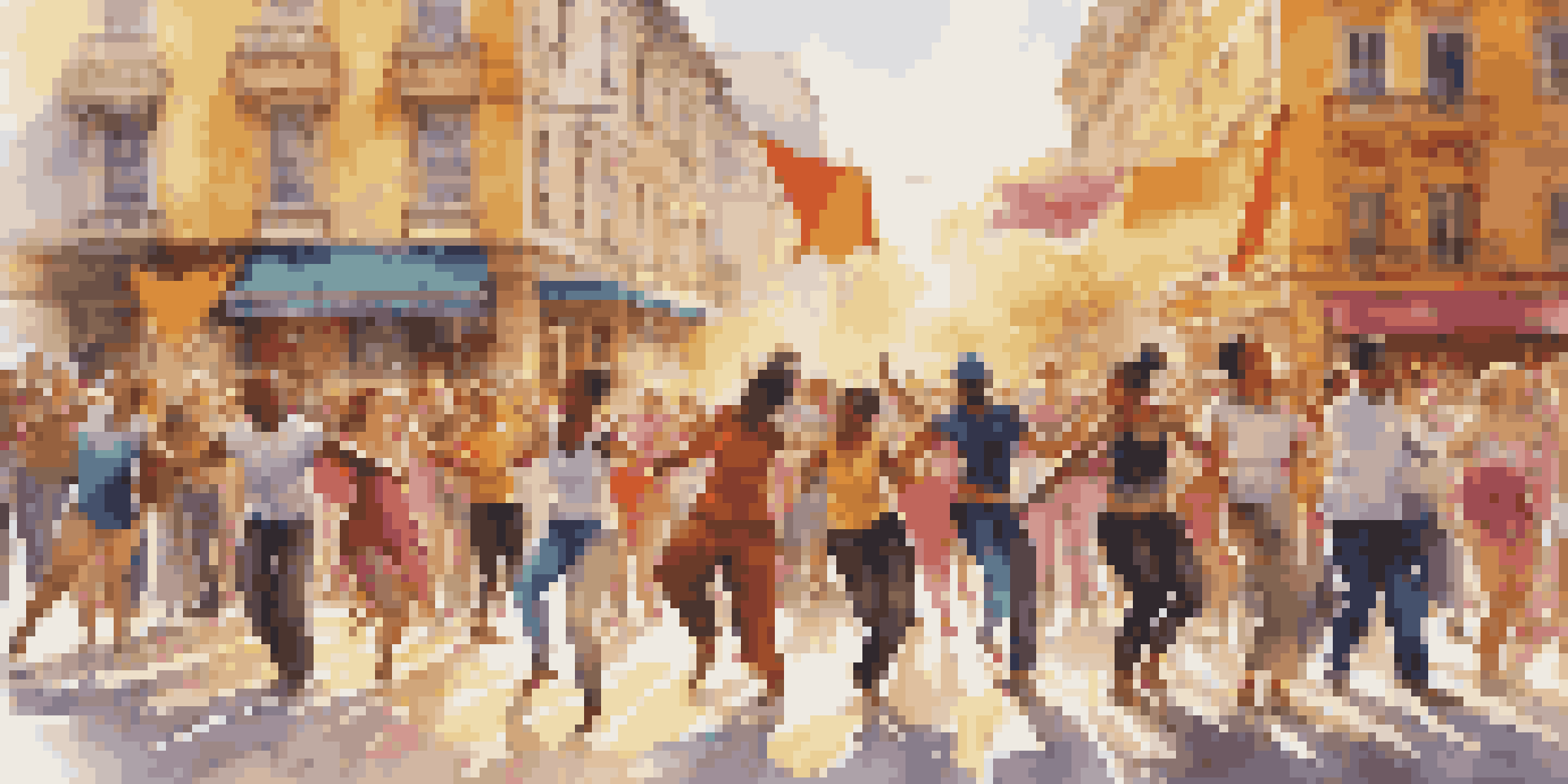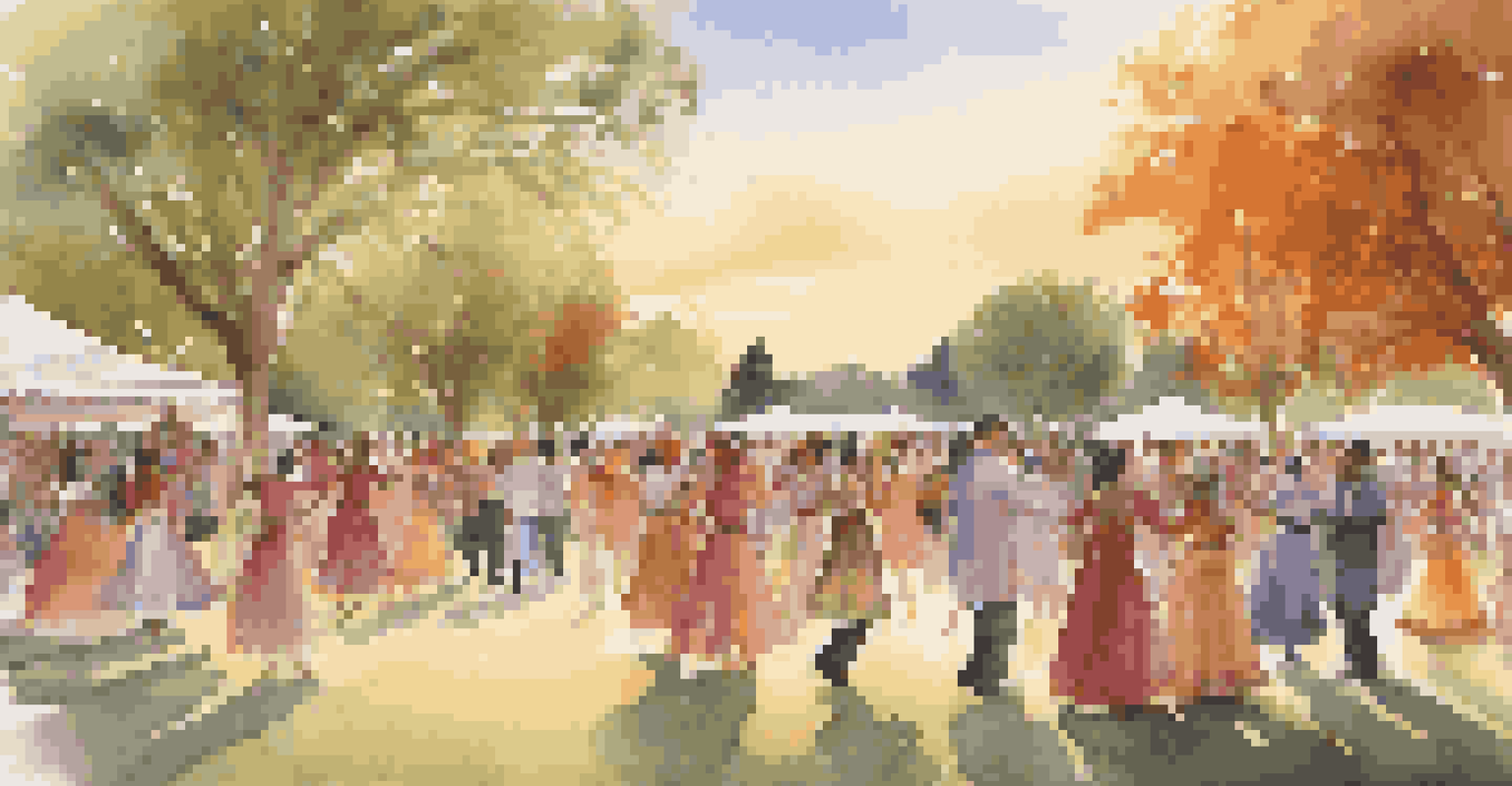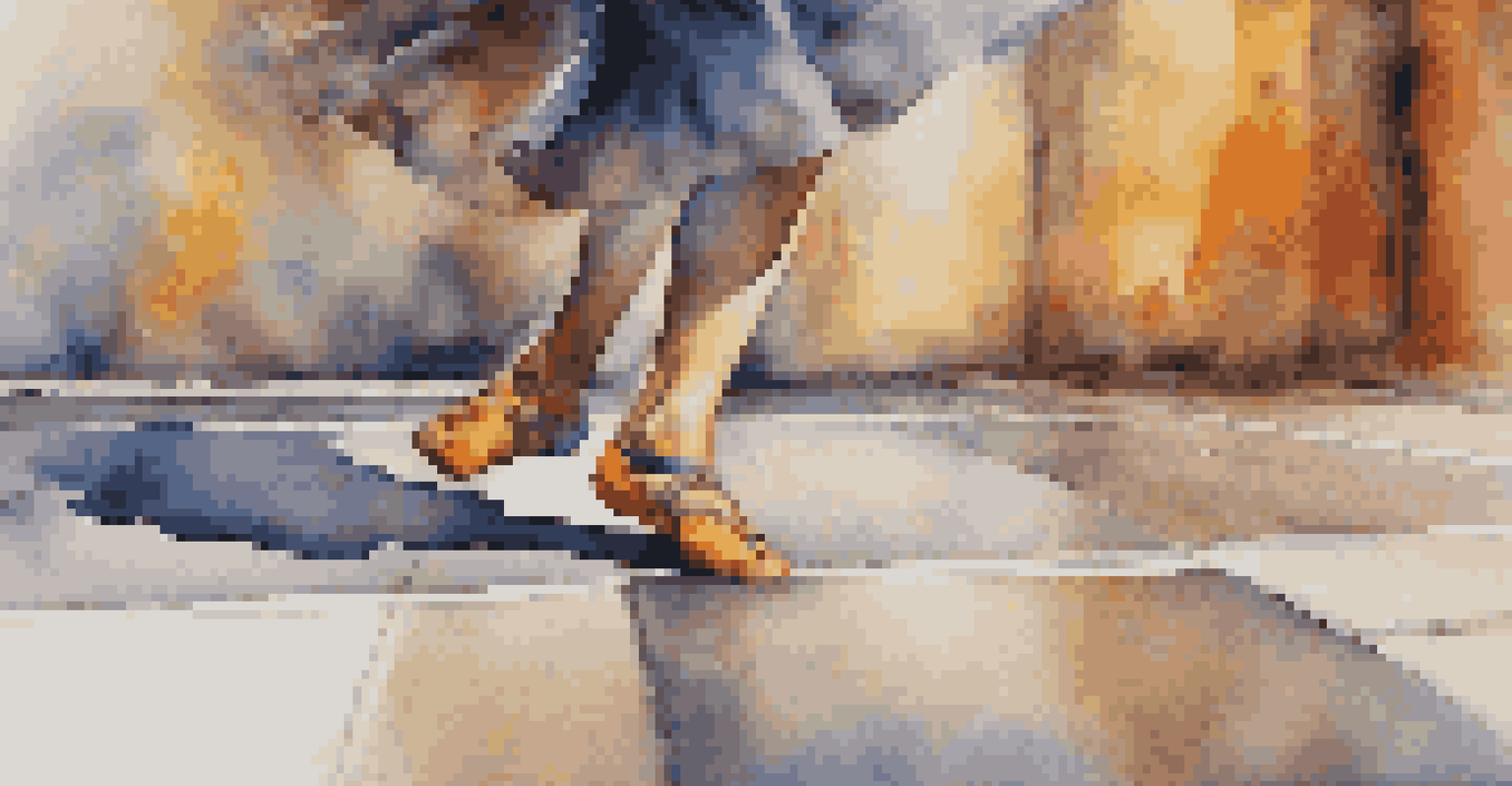Dance and Public Space: A Platform for Expression

The Role of Public Space in Community Engagement
Public spaces are the heart of communities, serving as gathering spots where people from diverse backgrounds converge. These areas often host various activities, from markets to performances, fostering a sense of belonging. When dance enters the equation, it transforms these spaces into vibrant platforms for expression and connection.
Dance is the hidden language of the soul.
Imagine a bustling city square where a spontaneous dance performance breaks out. The energy is palpable, drawing in passersby who may not have planned to stop but are now captivated by the rhythm and movement. This interaction highlights how dance can create a shared experience that strengthens community ties and encourages participation.
Moreover, public spaces allow for a unique form of artistic expression that is accessible to all. Unlike traditional venues, these open areas invite everyone to engage, thus democratizing art and making it a part of everyday life. In this way, dance becomes a powerful tool for social cohesion and cultural representation.
Dance as a Form of Social Commentary
Dance is not just a form of entertainment; it can also convey powerful messages about societal issues. Many choreographers use public spaces to highlight themes like inequality, freedom, and identity, encouraging audiences to reflect on these important topics. This interplay of movement and message can spark conversations that resonate far beyond the dance itself.

For instance, flash mobs have become a popular way to engage with the public and draw attention to causes. These organized but spontaneous performances can turn a mundane moment into a compelling statement, inviting spectators to consider the underlying issues being addressed. This blend of art and activism underscores the potential of dance as a vehicle for change.
Dance Unites Communities
Public spaces serve as vibrant venues for dance, fostering connections and a sense of belonging among diverse groups.
Additionally, dance in public spaces can challenge societal norms and promote inclusivity. By showcasing diverse forms of dance from various cultures, artists can celebrate identity and encourage acceptance. This not only enriches the artistic landscape but also cultivates a deeper understanding among community members.
The Impact of Technology on Dance in Public Spaces
In today's digital age, technology plays a significant role in how dance is experienced in public spaces. Social media platforms allow dancers to share their performances with a global audience, creating a ripple effect that can inspire local movements. This connectivity transforms how dance is perceived and practiced, making it more accessible and relatable.
Art is not what you see, but what you make others see.
For example, live-streaming a dance event in a public square can attract viewers from around the world, amplifying the message and significance of the performance. This not only increases visibility for the dancers but also invites people to reflect on the cultural and social themes presented. The fusion of technology and dance thus expands the reach and impact of artistic expression.
Moreover, interactive installations that incorporate dance and technology encourage audience participation. These setups can range from motion-sensor displays that react to movement to apps that let viewers influence the performance in real-time. This engagement creates a unique experience that blurs the lines between performer and spectator, fostering a sense of community and collaboration in the creative process.
Historical Perspectives on Dance in Public Spaces
Throughout history, public spaces have served as vital sites for collective dance. From ancient rituals to modern flash mobs, communities have long used dance to celebrate, mourn, and connect. These historical precedents remind us that dance has always been intertwined with the social fabric of society, serving as a means of expression and unity.
Consider traditional folk dances that originate from communal gatherings. These dances not only preserve cultural heritage but also reinforce social bonds within communities. By performing in public spaces, these traditions are kept alive and shared with new generations, ensuring that the stories and values they embody continue to resonate.
Art as Social Commentary
Dance can convey powerful societal messages, encouraging reflection on issues like inequality and identity through public performances.
In contemporary settings, this historical context enriches our understanding of public dance. Artists often draw inspiration from past practices, infusing their work with elements of history while addressing modern issues. This dialogue between the past and present illustrates the ongoing relevance of dance as a form of expression in public life.
Challenges Faced by Dancers in Public Spaces
While public spaces offer ample opportunities for dance, they also present challenges that artists must navigate. Issues such as weather conditions, permits, and safety can impact performances, often requiring dancers to adapt on the fly. These hurdles can be daunting but also encourage creativity and resilience in the face of adversity.
Moreover, the presence of an audience can be both a motivator and a source of pressure. Dancers may feel vulnerable performing in front of strangers, leading to a complex mixture of excitement and anxiety. This dynamic highlights the courage it takes to share art in public spaces, where the potential for judgment can loom large.
Additionally, not all public spaces are welcoming or accessible to dancers. Some areas may have restrictions that limit performances, while others might not be equipped for the specific needs of certain dance forms. Addressing these challenges requires advocacy and collaboration between artists, community members, and local authorities to create inclusive environments where dance can flourish.
The Future of Dance in Public Space
As communities evolve, so too does the role of dance in public spaces. Emerging trends suggest a growing emphasis on inclusivity and diversity, with artists increasingly exploring new forms and styles that reflect the richness of their communities. This evolution speaks to the adaptability of dance as an art form, capable of embracing change while maintaining its core purpose: expression.
Furthermore, as cities become more aware of the value of public art, we can expect increased support for dance initiatives. Governments and organizations may invest more in programs that encourage performances in public spaces, recognizing their potential to enhance community engagement and cultural vibrancy. This shift could lead to a renaissance of public dance, where artists are empowered to share their work freely.
Future of Dance is Collaborative
The evolving landscape of public dance emphasizes inclusivity and community engagement, paving the way for innovative artistic expressions.
Ultimately, the future of dance in public spaces will be shaped by collaboration and innovation. As artists, community members, and policymakers come together, they can create environments that not only celebrate dance but also foster connection and understanding. This collaborative spirit will ensure that dance remains a vital form of expression in public life for generations to come.
Conclusion: Embracing Dance as a Collective Experience
Dance in public spaces is more than just movement; it is a celebration of life, culture, and community. By embracing this art form, we open ourselves to new perspectives and experiences that enrich our lives. The shared joy of dance can break down barriers, creating connections that transcend individual differences.
As we reflect on the role of dance in public spaces, it's essential to recognize the power it holds as a platform for expression. Whether it's a simple gathering of friends or a large-scale performance, each instance of dance contributes to a larger narrative about who we are as a society. This collective experience invites us to participate actively in the artistic dialogue.

In conclusion, let's champion the importance of dance in our public spaces. By supporting artists and advocating for inclusive environments, we can ensure that dance continues to thrive as a vital means of expression, fostering community and creativity for all.